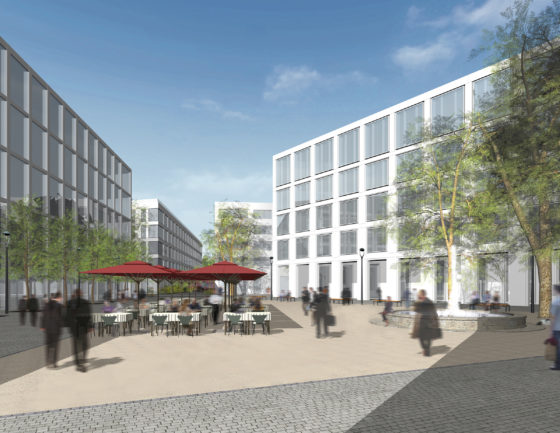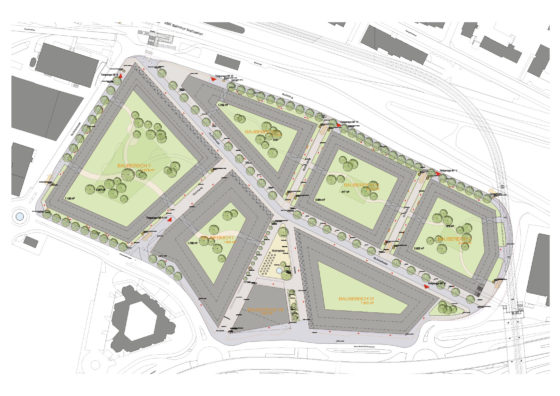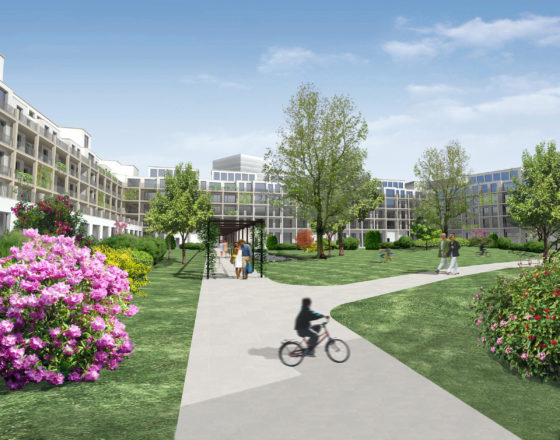The Richti neignbourhood of Wallisellen lies between the train station of Wallisellen and the shopping centre of Glatt. It is organised around the Richtiarkade, a slightly bent, linear main street which directly and comfortably connects these two major points in the city. The public park, Richtiplatz, begins to unfurl at the point where the street begins to bend. Five additional, narrower streets compose the rest of the site plan, completing its geometrical and spatial relationships and allowing the site to appear both permeable and anchored in its surroundings. In doing so, it also remains an independent ensemble, coherent and providing a calm urban atmosphere. The streets and squares as well as buildings and courtyards radiate simplicity, solidity, and even a certain sense of luxury; their highly crafted quality combines sophisticated modern technology with established construction details. The architecture is one of permanence, which can age well and lends a specific identity to the area.
Richtiplatz is the heart of the development, both spatially as well as socially. Stretched between the lightly angular parts of the Richtiarkade and connected to Winterthurerstrasse by two short streets, the flow of movement on the site creates an excellent meeting place. Its cobblestoned paths are only available for delivery and service traffic, inviting the pedestrian to bide his time on a space shaded by trees and adorned by a fountain. During the warmer seasons, a Café provides outdoor seating; the area is large enough that one could set up kiosks and celebrate festivals. Richtiarkade is the only street that is available for non-residents, and is therefore the functional backbone of the area. Nevertheless, it also serves as the social backbone: under the protection of the arcades are shops, cafés, and restaurants. Traffic is conducted such that pedestrians are not threatened; Richtiarkade is first and foremost a place to take a stroll. Its qualities as a place of rest are underlined by not only the arcades, but also by stately trees.
The residential streets make it possible for every occupant to arrive directly as his front door. However, first priority is given to pedestrian and slow-traffic streets. As they are protected from fast traffic and beautified through front gardens, these streets form ideal gateways to the apartment buildings. Large, irregularly situated building sites (with the exception of high-rise towers and office parks) are designed as five-storey living or office buildings with spacious interior courtyards. In the office buildings, the ground storey is used for public functions (Cafeteria, Conference Rooms), and in the residential blocks (except for the Arcade Rooms) as studios and loft-style apartments. Roofs are usable as terraces. Every building has an individual character and a different architect was used for almost every one. Therefore, a genuine diversity was created – the same diversity which makes historical cities so attractive, full of life, and loveable. The buildings create a dialogue amongst one another as well as exist in deference to each other. What they have in common is the knowledge of individuality that leads to an idea of community.


